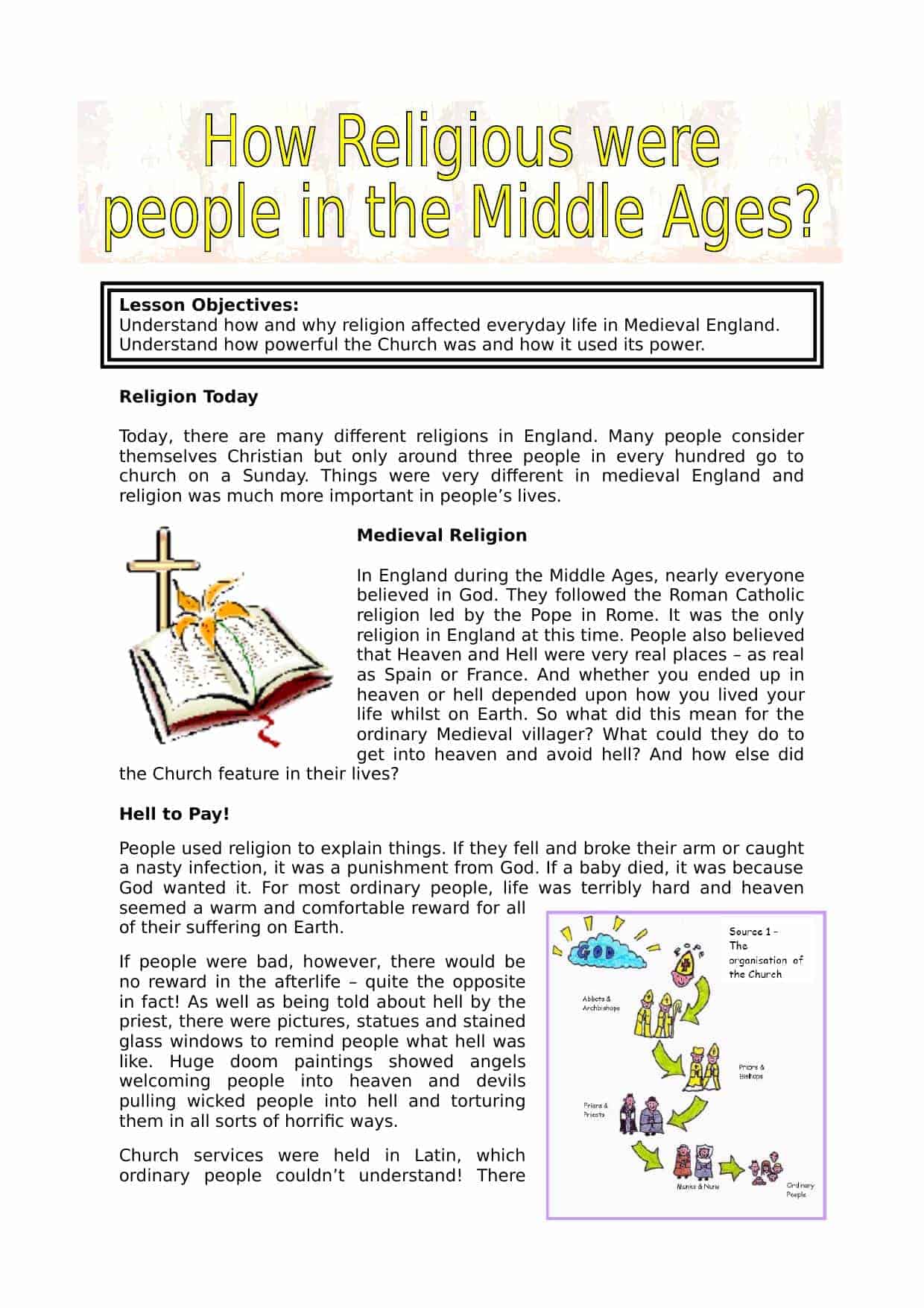Download Medieval Religion
Click the button below to download this worksheet for use in the classroom or at home.
Download →
Lesson Objectives:
- Understand how and why religion affected everyday life in Medieval England.
- Understand how powerful the Church was and how it used its power.
Lesson Snapshot:
Religion Today
Today, there are many different religions in England. Many people consider themselves Christian but only around three people in every hundred go to church on a Sunday. Things were very different in medieval England and religion was much more important in people’s lives.
Medieval Religion
In England during the Middle Ages, nearly everyone believed in God. They followed the Roman Catholic religion led by the Pope in Rome. It was the only religion in England at this time. People also believed that Heaven and Hell were very real places – as real as Spain or France. And whether you ended up in heaven or hell depended upon how you lived your life whilst on Earth. So what did this mean for the ordinary Medieval villager? What could they do to get into heaven and avoid hell? And how else did the Church feature in their lives?
Hell to Pay!
People used religion to explain things. If they fell and broke their arm or caught a nasty infection, it was a punishment from God. If a baby died, it was because God wanted it. For most ordinary people, life was terribly hard and heaven seemed a warm and comfortable reward for all of their suffering on Earth.
If people were bad, however, there would be no reward in the afterlife – quite the opposite in fact! As well as being told about hell by the priest, there were pictures, statues and stained glass windows to remind people what hell was like. Huge doom paintings showed angels welcoming people into heaven and devils pulling wicked people into hell and torturing them in all sorts of horrific ways.
Church services were held in Latin, which ordinary people couldn’t understand! There was a very good chance that the priest wouldn’t understand what he was saying either – he would just learn the services by heart! You couldn’t read the Bible unless you could read Latin – the Pope banned it from being translated into English.
The Heart of the Village
The biggest building in a Medieval town or village would be the church. Unlike today, churches were very noisy, sometimes hectic places. As most people’s homes were tiny, smelly huts full of smoke and animals, they didn’t want to spend much time there! The church served as a meeting place for people, somewhere they could all sit comfortably and catch up on local gossip.
The Price of Religion
The church didn’t come for free. The villagers had to give one tenth of all the food they grew to the parish priest. This was known as a tithe. As you can imagine, the villagers were often unhappy about this, especially when the harvest was bad. You also had to pay the church when you died! The priest was entitled to receive the second best animal of anyone who died in the village. Worshipping God and trying to get into heaven was an expensive business.
Worksheet Lesson Plan:
- Aimed at Students studying across UK Year 7,8 & 9 or equivalent
- Premium resource
- Use as you wish in the classroom or home environment
- Structured information sheet.
- Challenging questions on Medieval religion.
